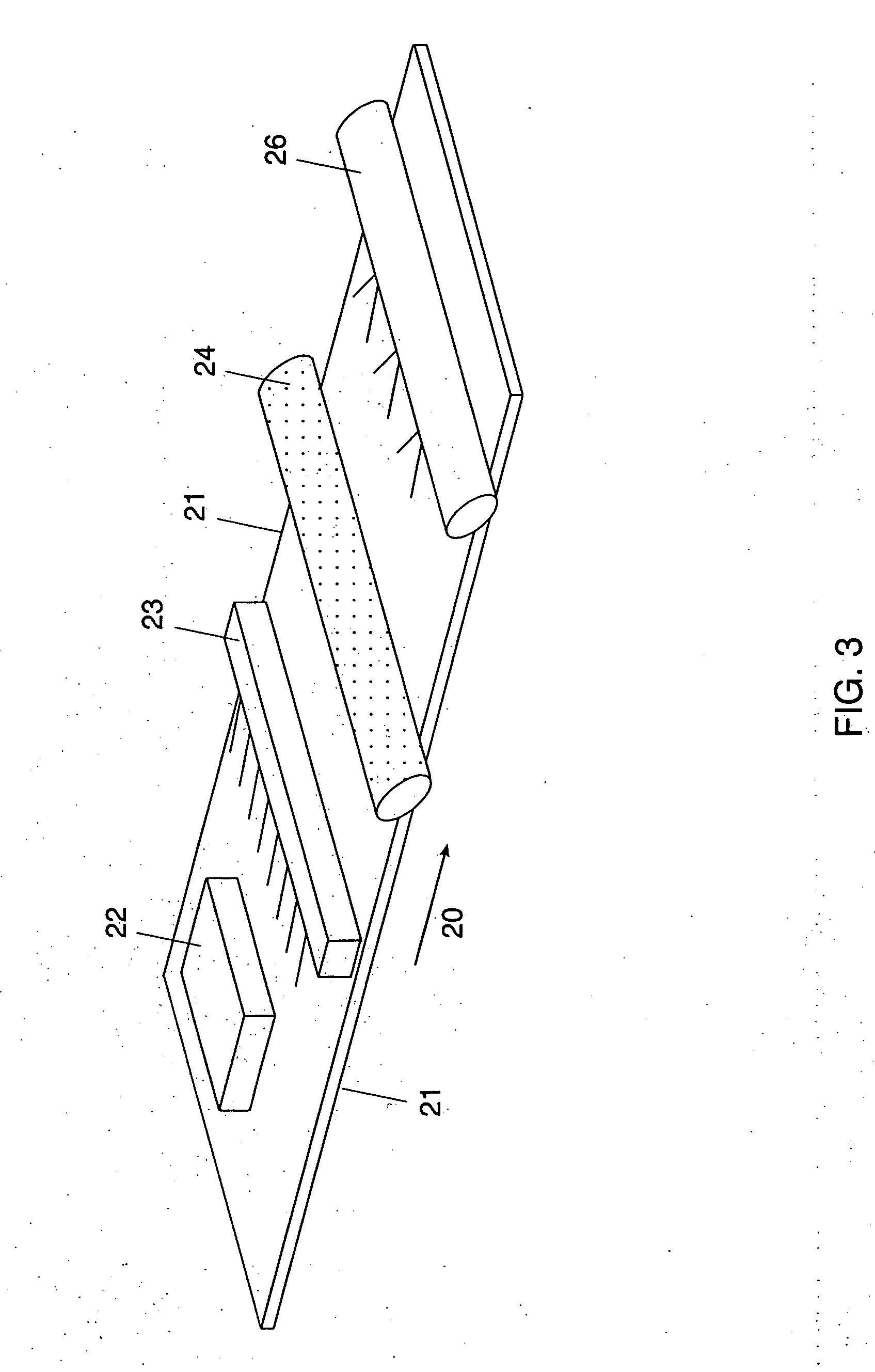Process and materials for marking plastic surfaces
a technology of plastic surface and process, applied in the field of process and materials for marking plastic surface, can solve the problems of limited print quality, less easily adaptable to cij, limited print quality, etc., and achieve the effect of high resistance to physical and chemical damag
- Summary
- Abstract
- Description
- Claims
- Application Information
AI Technical Summary
Benefits of technology
Problems solved by technology
Method used
Image
Examples
example i
[0058] This example provides a formulation that can be applied in both methods of the first embodiment.
Polyvinyly alcohol solution (12% in water)22.4Deionized water115Polyacrylic acid (35% in water)32Super Wetting Agent (Q2-5211 Manufactured by4Dow Corporation, Midland, MI, USA)Walpol 40-136 Vinyl-acrylic latex polymer37(Reichold Inc., Research Triangle Park, NC, USA)Cymel UFR-60 Methoxymethyl methylol urea by Cytec13.5Industries, Five Garret Mountain Plaza, West Patterson,NJ, USA)Cycat 4045 (amine inhibited toluene sulfonic acid)8Cytec Industries, Five Garret Mountain Plaza,West Patterson, NJ, USA)
[0059] The above-enumerated mixture was made up and high-speed stirred. A 175-micron polyester loaded with barium sulfate to give a white opaque appearance was used as the substrate. This was coated with the above formulation solution using a Mayer rod and the coating was air dried overnight at room temperature. The film formed on the polyester had a coating weight of approximately 2.6 ...
example ii
[0060] This example provides a formulation that can be applied in both methods of the first embodiment.
Polyvinyly alcohol solution (12% in water)22Deionized water111Polyacrylic acid (35% in water)35Super Wetting Agent (Q2-5211 Manufactured4by Dow Corporation, Midland, MI, USA)Walpol 40-136 Vinyl-acrylic latex polymer37(Reichold Inc., Research Triangle Park, NC, USA)Cymel UFR-60 Methoxymethyl methylol urea by14Cytec Industries, Five Garret Mountain Plaza,West patterson, NJ, USA)Cycat 4045 (amine inhibited toluene sulfonic acid)8.6Cytec IndustriesKronos 2065 (Kronos Inc. Huston, Texas, USA)53.8Ethanol80
[0061] The above-enumerated mixture was made up and ball-milled overnight. A 175-micron transparent polyester was used as the substrate. This was coated with the above formulation solution using a Mayer rod and the coating was air dried overnight at room temperature. The film formed on the polyester had a coating weight of approximately 8.7 grams per square meter. This was passed thro...
example iii
[0062] This example provides a formulation that can be applied in both methods of the first embodiment.
Glasscol C44 (styrene / acrylic copolymer emulsion8.7sold by Ciba Speciality Chemicals, Macclesfield, UK))Water15.7BYK 346 (surfactant sold by BYK-Chemie GmbH,0.3Postfach, Germany.Polyvinyl alcohol solution (12% in water)2.0Kronos 2065 (titanium dioxide sold by Kronos Inc.,6.6Huston, Texas, USACabosil M5 (Untreated fumed silica sold by0.94Cabot Corporation, Tuscola, IL, US)
The above enumerated mixture was made up with stirring after each addition and ball-milled overnight.
[0063] 5 grams of the above mixture was then mixed with the following ingredients:
Water3.2UFR-60 (aminoplast by Cytec Industries, West Patterson,0.86NJ, USA)Cycat 4045 (catalyst by Cytec Industries, West Patterson,0.19NJ, USA.)
The final mixture was coated on a 175-micron clear polyester film. The coating mixture was applied using a wire wound rod and was dried at 110° C. for 4 minutes to a dry weight of appro...
PUM
| Property | Measurement | Unit |
|---|---|---|
| Fraction | aaaaa | aaaaa |
| Percent by mass | aaaaa | aaaaa |
| Weight | aaaaa | aaaaa |
Abstract
Description
Claims
Application Information
 Login to View More
Login to View More - R&D
- Intellectual Property
- Life Sciences
- Materials
- Tech Scout
- Unparalleled Data Quality
- Higher Quality Content
- 60% Fewer Hallucinations
Browse by: Latest US Patents, China's latest patents, Technical Efficacy Thesaurus, Application Domain, Technology Topic, Popular Technical Reports.
© 2025 PatSnap. All rights reserved.Legal|Privacy policy|Modern Slavery Act Transparency Statement|Sitemap|About US| Contact US: help@patsnap.com



